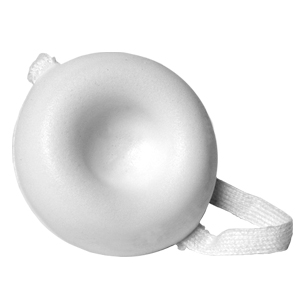The cervical cap is a form of barrier contraception which is different in construction and usage from the condom, but which performs the same function of preventing the sperm entering the uterus and precluding its union with the female egg.
Like the diaphragm, the cervical cap is a type of barrier contraception that women can use by insertion prior to sexual intercourse. It fits over the cervix snugly and can be used with or without Spermicide. It has to be fitted by using the finger to place it deep within the vagina and also using the finger to remove it.
 To gauge whether it is suitable for you or not, take a look at some of the pros and cons of this form of contraception.
To gauge whether it is suitable for you or not, take a look at some of the pros and cons of this form of contraception.
Benefits of cervical cap
1.This is a form of contraception controlled by the woman, and she doesn’t need the consent of the man (such as in the case of condoms) for its use.
2.It can be private thing and the device can be inserted prior to having sex so that the spontaneity of the moment is not interrupted.
In fact there is evidence to show that if the cap is placed in advance (before sexual arousal) it is more likely to be placed correctly maximizing its use.
3.Not only is it significantly successful in preventing unwanted pregnancies, there is evidence to show that the cervical cap can also help to reduce risk of sexually transmitted infections to an extent. This is important since women are known to be more vulnerable to such infections such as HIV than men.
4.These contraceptive devices are reusable and may be reused for up to two years. The device can be removed some hours after intercourse and then stored. It can then be reused after washing and appropriate disinfection.
Possible disadvantages of the cervical cap
- Many women find that the cap is difficult to insert and to remove. The level of comfort of use may low for many, which is probably why this is not a very popular form of barrier contraception.
- Pain and discomfort during intercourse are a frequent complaint with the use of the cap.
- Women typically have to undergo screening prior to being fitted with a cap that is the appropriate size for a given woman. The size may change after a pregnancy and refitting is required.
- This form of contraception may not be suitable for several women: those who have irregularly shaped cervixes, those who have remnant of scar tissue and for those with an anteflexed uterus.
- In many cases it is recommended that a Spermicide be used along with the cap for appropriate protection against unwanted pregnancy.
- A woman has to leave the cap in place for several hours after intercourse which may not be a comfortable idea for many women.
- The cervical cap is a device that usually requires a prescription and medical supervision.





